Published by Jeremy.
Disclaimers: We use demographic data, email opt-ins, display advertising, and affiliate links to operate this site. Please review our Terms and Conditions for more information. This website is intended for those of legal drinking age in your jurisdiction.
Before visiting Portugal, I felt like I had a rather robust understanding of all things port and the differences between styles like ruby, tawny, vintage, LBV, and the like thanks to taking WSET Level 3 (and of course, somewhat frequent samplings at home).
It wasn't until arriving that I learned more about another style of port that I found I was less familiar with. This was Colheita port, a subcategory of tawny that includes a vintage year on the bottle as opposed to a more general age indication like you'd normally expect (10, 20, 30 years, etc).
As Colheita ports play off of labeling from conventional tawny and vintage ports, it isn't surprising that some wineries do not paint the clearest picture when describing it to consumers. It didn't take long for us to pick up on one very important caveat- the bottling date matters.
So unless you know to look for that crucial piece of information when buying a bottle, well, you may not be getting what you think you are!
If you were just as surprised by this as I was, this article is for you. In this one, I thought it'd be fun to share the breakdown between Colheita and tawny ports. While quite similar in theory, in practice they can be quite different. You're quickly going to find out why that caveat is so important.
Colheita Port vs Tawny Port – How Are They Different?
When it comes down to it, Colheita and tawny ports are both aged for many years in smaller wooden barrels to get those oxidative characteristics we love like chocolate, caramel, dried fruits, nuts, and more.
Your conventional tawny ports will have an age indication on the label of either 10, 20, 30, or 40 years. These are cues to give you an idea of what the port will taste like and are not necessarily that the grapes inside are, in fact, precisely 10, 20, 30, or 40 years old. An independent panel verifies whether any given bottle tastes like what a consumer should expect for its respective age range, but wineries have some flexibility in what they can do to achieve that final flavor profile.
- Example: For a 20-year tawny, one producer may mix port from 5-year and 30-year barrels while another may mix port from 15-year and 25-year barrels. As long as the final tasting profile is what a 20-year tawny should be, that is the target. Some sources may suggest that the “average age” of the grapes should be these years at a minimum, but other sources conflict with that. Unanimously, all wineries we visited said the panel dictates approval based on flavor first and foremost.
If you are a Champagne drinker, this should sound familiar. They do a similar blending setup when it comes to producing non-vintage (NV) sparkling wines. The goal is to mellow out seasonal variations and produce consistent flavor profiles for releases year after year. Buy a bottle now and it should, hopefully, taste pretty similar to a bottle you bought 10 years ago. This is a general way to look at conventional tawny ports as well- consistency is key.
Colheita, on the other hand, means “harvest” and these often come with the harvest year listed on the bottle and no prominent age indication beyond that. You'll simply see “Colheita 1975” in large font on the front of the bottle and that is that. Here, the grapes must come exclusively from that single year and some flavors are likely impacted by the seasonal weather much like any conventional wine. Producers may likely blend different barrels before bottling, but if you buy a 1975 Colheita tawny, you are getting 100% of grapes harvested in 1975 no matter what it ultimately tastes like.
This is similar to what we think of with vintage port but with a few key differences. First, Colheita does not have to be a declared year by the independent panel the way it is for vintages (which only come out in years with the best possible conditions). Second, and more importantly, vintage ports are bottled young so they can age over time via oxygen intake into the bottle through the cork. Colheitas are a bit different in that they are aged in barrels just like conventional tawny ports and bottled when they're meant to be consumed. They do not benefit from further time inside the bottle the way vintage ports do.
This is where our caveat comes into play (and truly why we're writing this article in the first place). The harvest date on the label only tells half of what you need to know for this style of tawny port. For the second half, you need to flip the bottle around to find the bottling date!
Colheita Bottling Dates Could Matter a Great Deal
You may be seeing where I am going with this already, but how long a Colheita port spends in the barrel should matter a great deal to consumers, but it is hardly ever talked about in favor of harvest date alone. The reason for this is that conventional wisdom (and virtually every winery tour guide we met) will tell you that tawny ports simply do not get better once bottled the way vintage ports do.
Sure, there may be some very minor oxidation over time, but for the most part, what we come to love about tawny ports happens when it is in the barrel almost exclusively. The winemaker chooses when to bottle it, and very much wants you to drink it as-is upon release.
The problem here is that you have to find some very small print on the back of the bottle to figure out the bottling date as the harvest year is only one part of the equation. Unless you know to check for this, you are unable to see the full picture of what you're about to buy. To really explain what we mean by this, perhaps it is best to look at an example.
When we arrived in Lisbon, we purchased a 1975 Colheita to enjoy on our trip. We purchased it in 2021, and (because we didn't know any better at the time), assumed we were drinking a roughly 46-year-old tawny port. By Colheita standards, we do need to be fair and say that, yes, every grape in that bottle was harvested 46-years ago. This is the requirement to make it a 1975 Colheita. But what we were drinking was not representative of a tawny port aged 46-years in a barrel. We later found out it was bottled in 2014- that is to say, seven years before we drank it and only 39 years of barrel time.
If you do any Colheita tastings around Porto, especially the Decade's Flight at Kopke, you'll quickly learn that seven years can be an incredible difference in terms of flavors and aromas.
Herein lies the problem: Consumers may only think about Colheitas in terms of the harvest date alone. A salesperson may try and sell you on the merits of a “good year” (which admittedly does matter), but because prices rise dramatically as bottles become older most consumers will likely make the incorrect leap that the tawny was in the barrel for almost all of that time since harvest. This is absolutely not the case.
- To put it bluntly: If you buy a 1940 Colheita in 2021 but it was bottled in 1980, I'm afraid you're not going to be drinking an 81-year-old tawny. You're going to be drinking wine made from 81-year-old grapes, yes, but it will more likely taste like a 40-year-old tawny that simply costs 10x as much because of its age and scarcity. On the flip side, if you bought a 1940 Colheita bottled in 2021, you would then very much be enjoying a tawny aged for 81 years. But you'll only know this by verifying the date on the back of the bottle as this is the only piece of information that ties it all together.
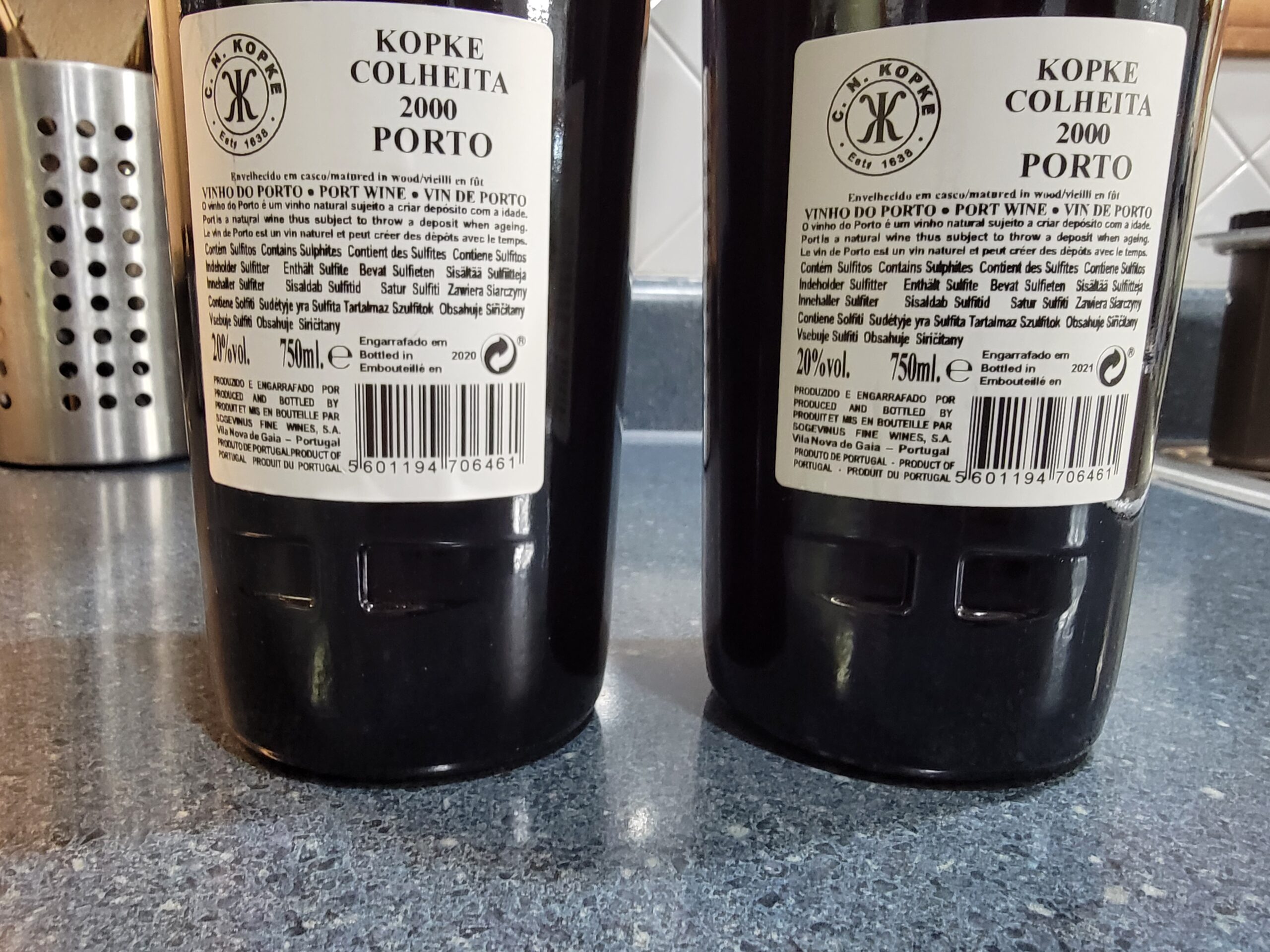
Now, most consumers will not be finding this age variation as drastic as my blunt example above, but to me, the most important piece of all is simply getting what you think you are when you buy a bottle. There are many, many stores all over Portugal where it is obvious that bottles have been sitting there for years if not decades. These Colheitas are likely changing minimally while their price continues to inflate, and therein lies a huge problem.
Say you tried a 1975 Colheita on Kopke's decade's flight like we did, and you want to go buy a bottle. If you head into that musty shop and pick one up, perhaps it was bottled in 2000. You think nothing of it, go home, and open it up to find the bottle tastes nothing like what you remember. This is because at Kopke, odds are good you had one that was bottled in the last year or two (we confirmed all of ours were recent bottlings). So at the tasting, you drank a 45+ year old tawny, and returning home you realize you only bought a 25 year old tawny that sat on the shelf for two decades.
Oops.
This is one reason why we do not recommend buying any port from questionable wine stores in Portugal. Instead, either buy directly from the winery or perhaps at a Garrafeira Nacional whose stores get much higher foot traffic and bottles turn over that much quicker (thanks to 2 Food Trippers for the store rec. there). Even there, you'll always, always, want to doublecheck bottling date especially if you're looking to pick up one reflective of a tasting you did while in the country.
So before you go all-in on that old Colheita port because of its vintage, or because it is the same bottle you had in a tasting flight, flip it around and check the bottling date to ensure it is, indeed, the same (if not close enough). You may be surprised to find out they can be incredibly different depending on the store you are in.
Once you do that, shop away!
Did you buy any Colheita tawnies while in Portugal? How good were the guides at explaining this one unique caveat? Comment below to share!
Upgrade Your Home Wine Bar
Need to upgrade your wine bar? Grab some new wine accessories:

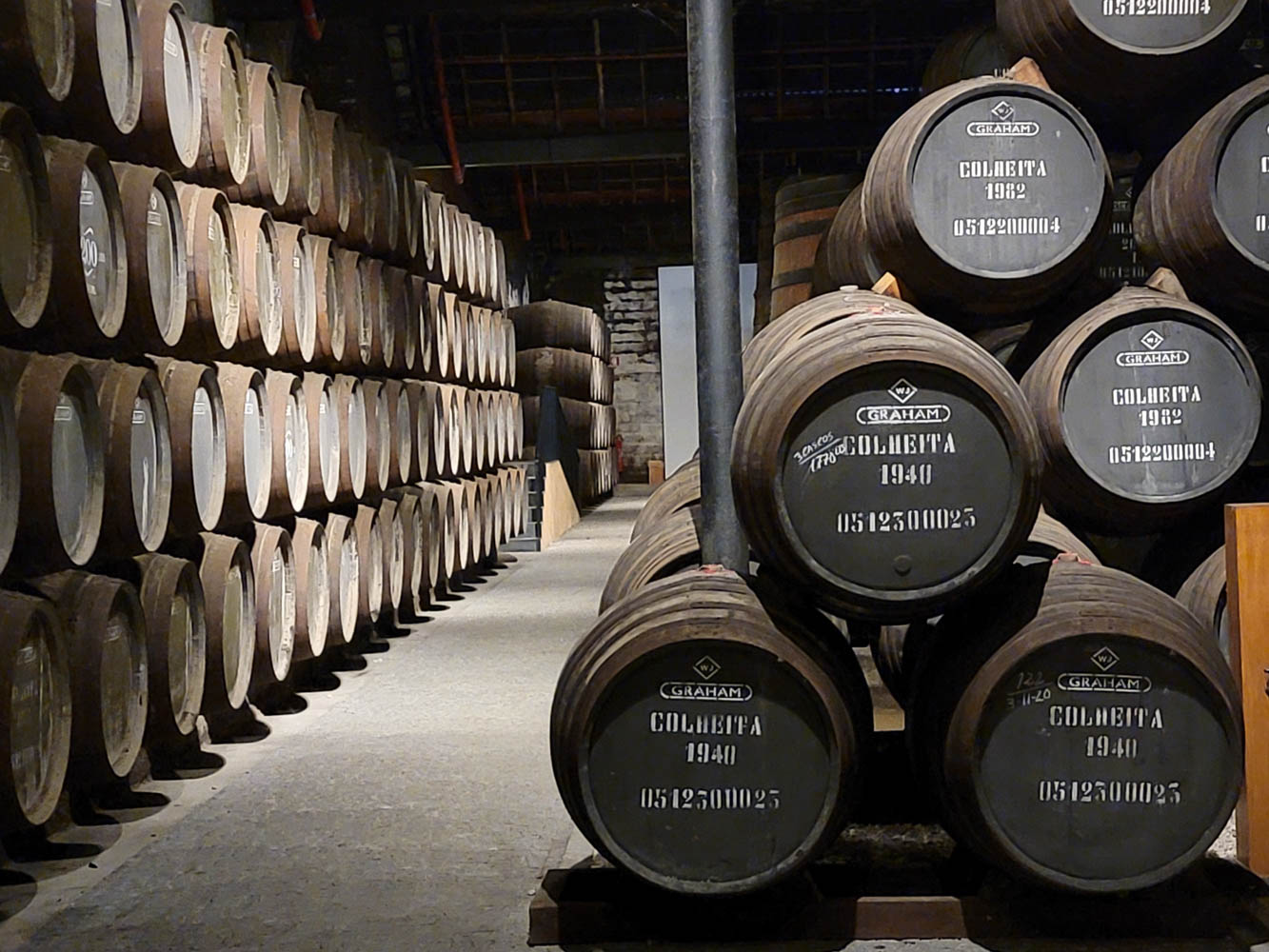
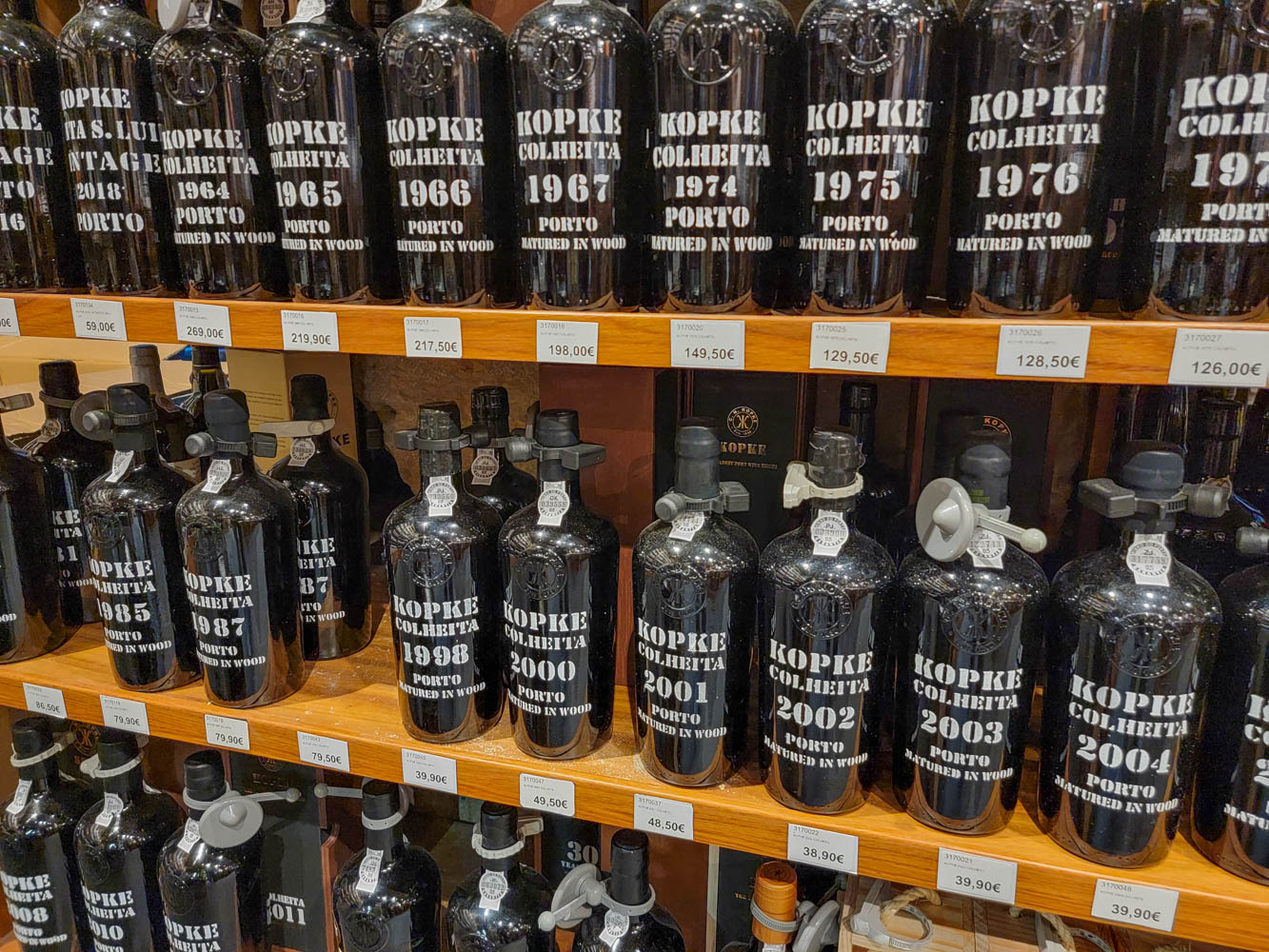

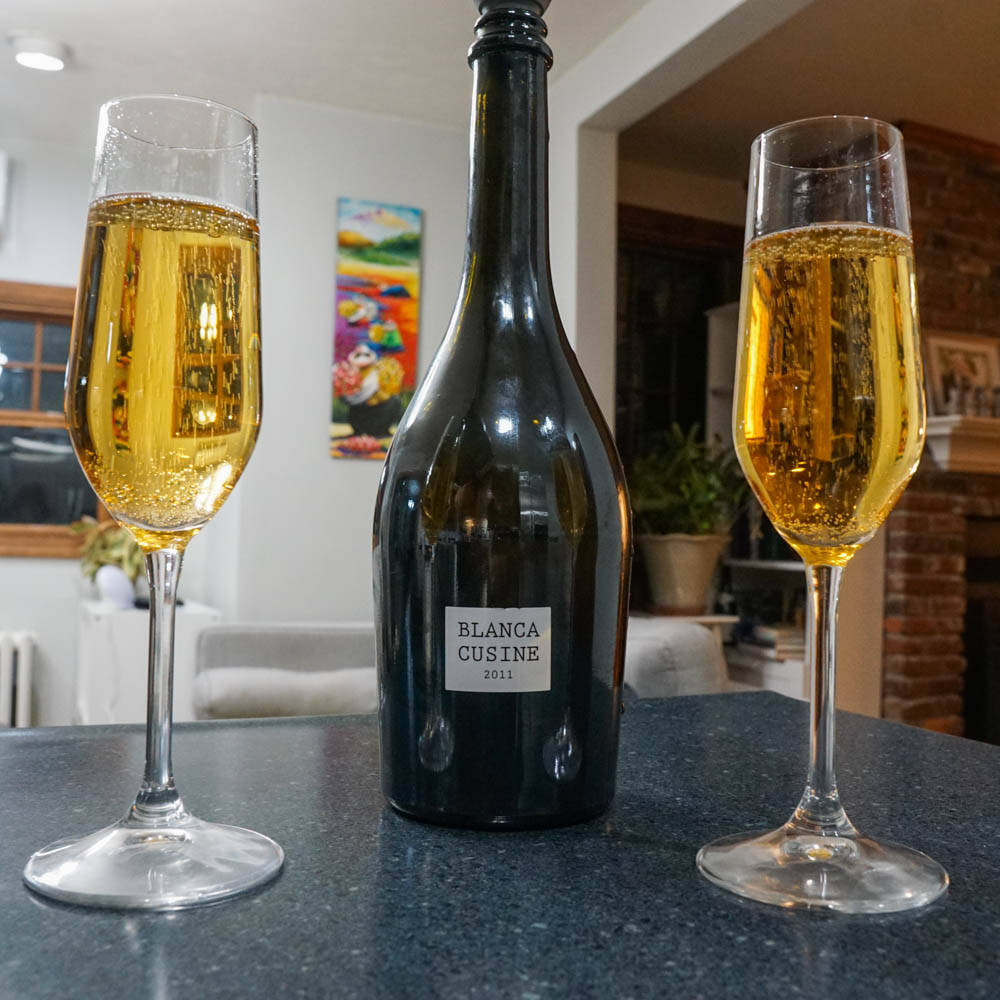
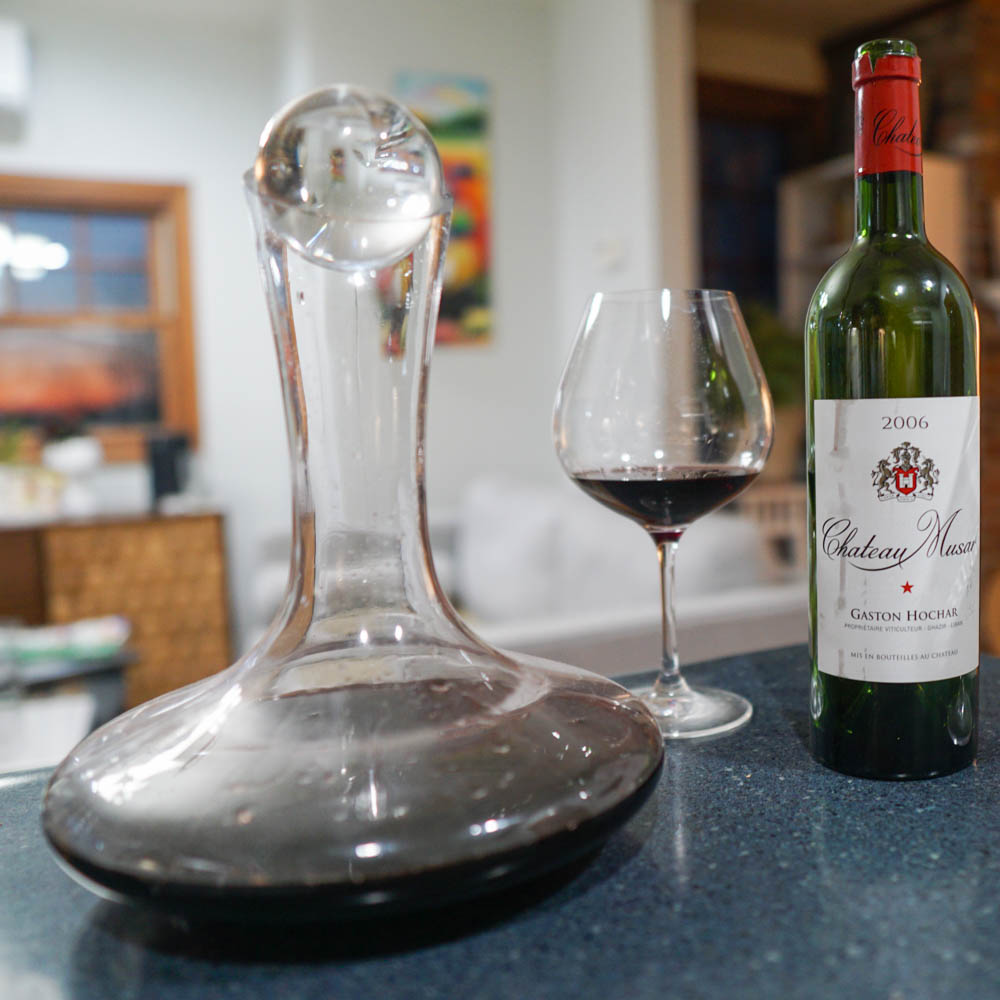
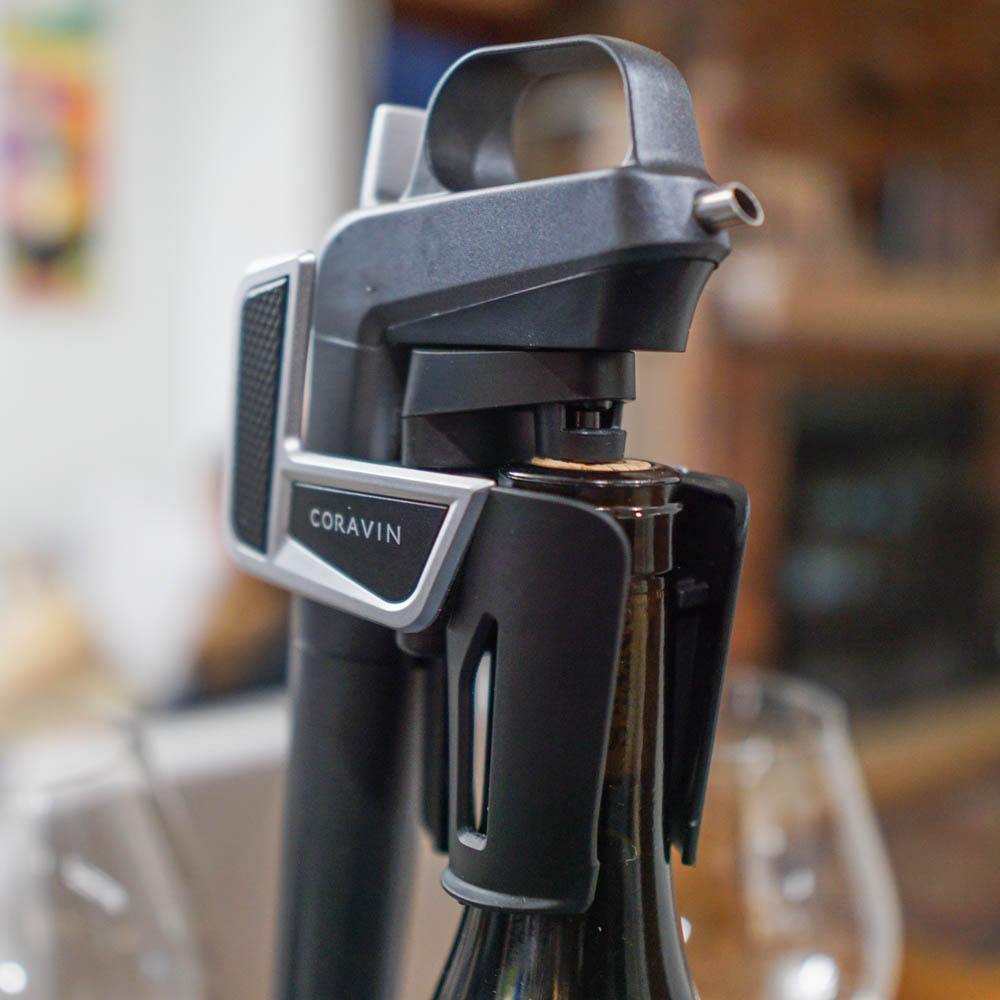
“So before you go all-in on that old Colheita port because of its vintage, or because it is the same bottle you had in a tasting flight, flip it around and check the bottling date to ensure it is, indeed, the same (if not close enough).”
Thanks – was about to do just that with a ’63 Krohn Colheita til I read this! Bottled in ’66 🥴
Dang! That is an interesting bottle age for a find. I wonder how well it has held up after almost 60 years in bottle, but yeah, I don’t think you’re going to have a 60 year age profile on that, either.